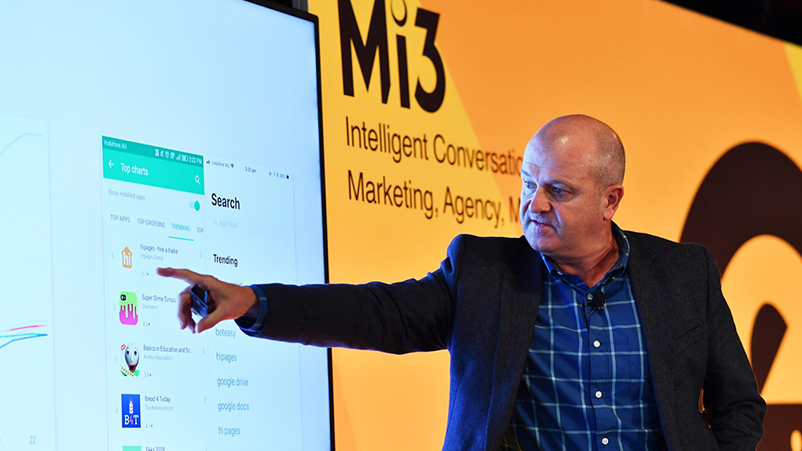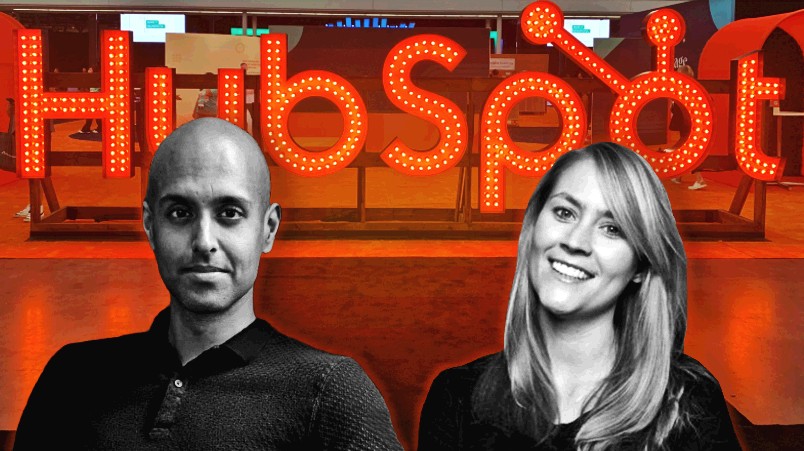Hipages CCO: Pain is coming for those who have not invested in brand

Hipages chief customer officer Stuart Tucker believes the power of brand building and emotional messaging has been lost as marketers have focused on performance media.
Sustained investment in brand marketing before, during and post-Covid has driven increased brand awareness and consideration for tradie marketplace Hipages while decreasing its reliance on performance media. CCO Stuart Tucker thinks industry must ditch an obsession with data and targeting and re-embrace more emotive advertising – or watch brands lose value.
I believe the brands that maintained their investment in the brand [during Covid] will pull away from the brands that either massively reduced their budgets or cut it completely.
What you need to know:
- Hipages continued to invest in brand marketing through Covid and throughout 2020 including committing to its sponsorship of The Block.
- Hipages brand awareness increased from 27 per cent in August 2018 to 56 per cent in November 2020.
- Brand consideration grew from 17 per cent to 39 per cent over the same period.
- Hipages paid channels represent 21 per cent of jobs posted on the platform versus 46 per cent in 2018.
- CCO Stuart Tucker says the sustained investment in brand marketing has helped improve its unpaid channels enabling the brand to invest less in performance media.
- Hipages media investment mix is now close to a 50/50 split between performance (56 per cent) and brand (44 per cent).
- Tucker says the market is beginning to shift away from a reliance on performance to embrace emotional “attention-getting” advertising.
It’s official. Brand marketing works, says Hipages chief customer officer Stuart Tucker. The tradie marketplace, which had "very low" brand awareness two years ago, has flipped the switch, doubling brand awareness and bolstering consideration, trade enquiries and app downloads – all by investing in brand marketing. When Covid hit, the brand committed to maintaining this investment and the move has paid off.
"One of the consequences of investing in brand and maintaining our investment, over time and through Covid, is that we are now seeing the benefit that comes with building your brand where people are coming back to us actively or repeating with us or coming looking for us with a high degree of intent, rather than us having to go to market and almost buy those leads.”
It’s the result of a bold strategic shift in 2019 when Tucker opted to invest Hipages entire marketing budget into sponsoring The Block. It was a significant move for a brand that has been around for 14 years but registered low brand awareness.
“We invested our entire discretionary marketing budget in one program, The Block. We came in as a top tier sponsor, which involved product integration, advertising, and all the benefits of being a top tier sponsor.
“It was genuinely transformative for the business; we generated short- and long-term effects from our brand awareness, as well as jobs posted, trade inquiry, and app downloads. And then we repeated it again in 2020.”
Hipages brand awareness more than doubled from 27 per cent in August 2018 to 56 per cent in November 2020, while brand consideration increased from 17 per cent to 39 per cent over the same period.
Turning covid confusion into brand leadership
As Covid lockdowns and restrictions caused confusion among tradies and customers about what work could continue, Hipages recorded a decline in jobs posted on the platform.
"We swung very quickly into a message across paid, earned and owned media, positioning tradies as an essential service. And we felt it was important for us to be taking a position of brand authority and representing the category."
“We didn't adjust our spend immediately because we were keeping an eye on the market,” says Tucker. “We invested in brand advertising in the April/May/June quarter, and from then onwards, we went back to normal and maintained our brand investment at the same levels it would have been beforehand and moderated our performance spend.”
“At first, we had to move fast and adapt our messaging to be relevant, and then we just maintained our momentum and kept telling our story to an audience that was open to it. It would have been easy to shut it all down and just shut up shop, but we didn't do that, and we've benefited strongly from it.”
Hipages rode the trends as people began to look around their homes and see work that was needed. First came cleaning and home security jobs, then decks, landscaping and gardening jobs, building and extension jobs spiked with the government's home builder grant, plumbing and painting were next, and as the year ended, renovation jobs were booming.
"Australian homeowners went through their own life cycle in terms of what they were thinking about their homes. Interest rates were record lows; people had money in their pockets because they weren't travelling, and home improvements were spiking."
Brand versus performance
Hipages maintained its brand investment through 2020, including its sponsorship of The Block, and it has seen a substantial reduction in its reliance on performance channels. Hipages media investment mix is now close to a 50/50 split between performance (56 per cent) and brand (44 per cent).
“We found that as the brand awareness was increasing, our unpaid channels were also improving to the extent that we had to invest less on performance data targets. This is a great position to be in because then we can invest more back into the brand.
“In a marketplace like this, you build up like the flywheel effect of having installed customers that become repeaters. So, the bigger your install base of first-time users, then the bigger your base of repeaters, and then, the more you drive brand awareness and triggering people, then you get a natural outcome which is less reliant on performance media.”
Hipages uses its own metric to help measure the impact of its brand investment which takes the total jobs posted on the platform and applies the ratio of jobs it pays for versus the ones it doesn't.
Tucker says of the 1.5 million jobs posted on Hipages this financial year, paid channels represent 21 per cent versus 46 per cent in 2018.
“In the marketing world, we talk about the benefit of short- and long-term effects and all of the studies on that, we have genuinely seen the benefit of brand investment, accelerated with The Block, delivering both short- and long-term effects.
“I would expect that ratio of performance and brand building to hold as we go into next year. I think it's a pretty healthy balance for us to be at.”
Valuing brand marketing
As the market continues to recover, Tucker believes the gap between those who invested in brand marketing through Covid versus those which didn't will become more apparent.
"I believe the brands that maintained their investment in the brand, but maybe adjusted their messaging to be more sympathetic to the market and continue to invest, will pull away from the brands that either massively reduced their budgets or cut it completely."
Tucker believes the market is shifting away from performance to valuing brand marketing that employs emotion to connect with consumers and build brand equity.
“When we moved into the digital world, and marketers and media got obsessed with spots and dots and micro-targeting, I think the power of brand building and emotional messaging got a bit lost.
“I think now we realise that the pendulum needs to swing back towards emotional affinity, but also, more importantly, attention-getting advertising. Because a bad ad well- targeted is still a bad ad. I feel like the pendulum's swinging a little. I think we're behind a few other countries, but I hope for the sake of the industry that we go back to getting that balance right,” says Tucker.







